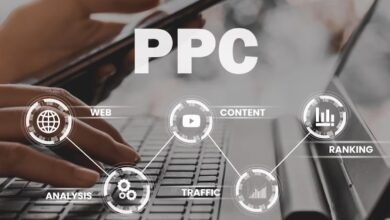5 Ways to Evaluate Your Business Strategies Effectively

Evaluating your business strategies is essential for sustainable growth and success. An effective evaluation helps you understand what works, what doesn’t, and how to pivot when necessary. Here are five actionable ways to evaluate your business strategies effectively.
How to Evaluate Your BUsiness Strategies Effectively
1. Define Clear Objectives
The first step in evaluating your business strategies is to define clear and measurable objectives. These objectives should align with your overall business goals and be specific, attainable, relevant, and time-bound (SMART). For example, if your goal is to increase sales, determine by how much and in what timeframe.
Clear objectives provide a benchmark against which you can measure the effectiveness of your strategies. Without defined goals, it becomes challenging to assess the impact of your efforts.
2. Utilize Data and Analytics
Data-driven decision-making is crucial for evaluating business strategies. Leverage analytics tools to collect data related to your objectives. This could include sales figures, website traffic, customer feedback, and market trends. Utilizing a digital impact assessment will allow you to analyze the effectiveness of your strategies through metrics like return on investment (ROI), customer acquisition cost (CAC), and customer lifetime value (CLV).
By analyzing this data, you can identify patterns, understand customer behavior, and make informed decisions that enhance your business performance.
3. Gather Feedback from Stakeholders
Feedback from employees, customers, and other stakeholders is invaluable in evaluating your business strategies. Engage with your team members to gather their insights and suggestions. They may have unique perspectives that can highlight strengths and weaknesses in your current approach. Similarly, solicit feedback from customers through surveys or direct communication.
Understanding their experiences and opinions can provide clarity on what’s working and what requires adjustment. By fostering open communication channels, you create a culture of collaboration that can lead to better decision-making.
4. Conduct Competitive Analysis
To effectively evaluate your strategies, it’s important to understand your competition. Conduct a competitive analysis to identify what other businesses in your industry are doing well and where they may be falling short. Analyze their marketing strategies, product offerings, pricing, and customer service.
This information can provide valuable insights into market trends and help you identify areas for improvement in your own strategies. Additionally, benchmarking against competitors can inspire innovative ideas and highlight gaps in the market that you can leverage.
5. Test and Iterate
The business landscape is constantly evolving, and what works today may not work tomorrow. Therefore, it’s essential to adopt a test-and-iterate approach. Implement pilot programs or small-scale tests for new strategies before rolling them out on a larger scale. Monitor the results closely and be prepared to pivot if necessary.
For instance, if you’re considering a new marketing campaign, test it with a specific audience segment first. Analyze the results and gather insights to refine your approach. This iterative process enables you to make adjustments based on real-world data, minimizing risks and maximizing potential success.
Visual Identity Matters
In addition to evaluating your business strategies, don’t overlook the importance of your brand’s visual identity. A strong visual identity can set you apart from the competition and enhance your brand recognition. Consider utilizing a 3D logo maker to create a visually appealing logo that captures the essence of your brand.
A well-designed logo not only helps in establishing a memorable brand image but also conveys professionalism and credibility. Incorporating unique design elements can make your brand more relatable and engaging to your target audience.
Conclusion
Evaluating your business strategies is crucial for ensuring long-term success and adaptability in a competitive market. By defining clear objectives, utilizing data and analytics, gathering stakeholder feedback, conducting competitive analysis, and adopting a test-and-iterate approach, you can effectively assess and refine your strategies. Furthermore, investing in your brand’s visual identity with tools like a 3D logo maker can enhance your overall marketing efforts and improve customer perception. As you implement these strategies, remember that continuous evaluation and adaptation are key to staying relevant and achieving your business goals. With the right approach, you can create a dynamic strategy that not only meets current demands but also anticipates future opportunities.







